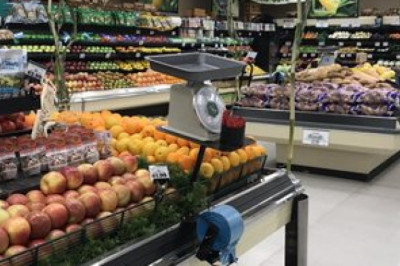views
The global lobster market is experiencing steady expansion fueled by growing consumer demand for premium seafood, technological innovation in logistics and farming, and an increasing shift toward sustainable fishing practices. With rising disposable incomes and shifting culinary preferences, lobster has evolved from a regional delicacy into a global luxury commodity.
According to the research report, the global lobster market was valued at USD 7.20 billion in 2022 and is expected to reach USD 17.07 billion by 2032, to grow at a CAGR of 9.13% during the forecast period.
Market Overview
Lobsters are considered one of the most valued types of shellfish in the world, particularly in North America, Europe, and increasingly in Asia. The demand is no longer limited to restaurant dining but is also rising in retail and e-commerce segments due to advancements in logistics and growing consumer inclination toward gourmet home dining.
Traditional lobster fishing grounds — such as Canada’s Atlantic coast and the northeastern U.S. — continue to lead production, but lobster farming is gaining momentum in regions like Southeast Asia and Latin America, providing new supply channels while relieving pressure on wild stocks.
The expansion of seafood exports and efficient cold chain networks have enabled producers to meet surging demand across continents while maintaining product freshness and quality. However, sustainability concerns related to overfishing and climate change are compelling both producers and buyers to turn to sustainable fishing practices.
Market Segmentation
By Type:
-
American Lobster (Homarus americanus)
Primarily found in the North Atlantic and considered the highest-value lobster species. Known for its rich flavor and large claws. -
Spiny/Rock Lobster (Panulirus spp.)
Found in warmer waters, mainly Australia, New Zealand, Southeast Asia, and parts of Africa. Valued for its tail meat, it lacks large claws.
By Product:
-
Live Lobster
Most in-demand form, especially for restaurants and high-end consumers in Asia and Europe. -
Frozen Lobster (whole/tails)
Common in retail and foodservice channels, particularly where live transportation is impractical. -
Cooked/Processed Lobster
Includes ready-to-eat products like lobster meat, bisque, and frozen meals.
By Distribution Channel:
-
Retail (Supermarkets, Specialty Stores)
-
Foodservice (Restaurants, Hotels)
-
Online Sales (E-commerce platforms, Direct-to-Consumer brands)
By End Use:
-
Commercial (HoReCa segment)
-
Household (Retail and Online Consumers)
Browse Full Insights:
https://www.polarismarketresearch.com/industry-analysis/lobster-market
Country-Wise Market Trends
United States
The U.S. continues to be both a top producer and consumer of lobster, especially the American lobster from Maine. Domestic consumption is high due to strong restaurant and tourism sectors, particularly in coastal states.
Key trends include:
-
Rising demand for sustainable fishing certifications.
-
Retail and online lobster sales increasing post-pandemic.
-
Export growth to China and Europe despite past trade tensions.
Major ports such as Boston and New York serve as export hubs, and the U.S. is investing in modernizing its seafood exports infrastructure.
Canada
Canada is the world's largest lobster exporter, with Nova Scotia and New Brunswick leading the charge. The country benefits from pristine Atlantic waters and stringent fisheries management.
Notable trends:
-
Expansion of exports to Asia, especially live lobster to China and South Korea.
-
Increasing use of traceability systems and eco-labels to meet sustainable fishing standards.
-
Government support for industry sustainability and indigenous fishing enterprises.
Canada’s reputation for cold, clean waters and high-grade lobster continues to support premium pricing in foreign markets.
China
China has emerged as the largest importer of live lobster, driven by growing affluence, urbanization, and the association of lobster with prestige and good fortune — particularly during Lunar New Year.
Market trends:
-
Skyrocketing demand for live American lobster.
-
Growth of luxury dining, online seafood sales, and domestic processing capacity.
-
Development of lobster farming in provinces like Hainan and Fujian to reduce import dependence.
While the market is highly import-dependent, interest in localized lobster farming is growing as a way to stabilize prices and improve food security.
Australia
Australia is a major producer of spiny lobster, mostly exported to China and Southeast Asia. The Western Rock Lobster is particularly sought after in Asian markets.
Current trends:
-
Significant investment in sustainable fishing and catch quota management.
-
Digital traceability for high-value exports.
-
Export diversification following China trade disruptions, targeting Japan and the Middle East.
Australia maintains a strong regulatory environment to preserve its status as a premium seafood exporter.
Vietnam
Vietnam is becoming a notable player through the rise of lobster farming, especially of tropical spiny species. The country exports mainly to China and other ASEAN nations.
Emerging trends:
-
Rapid adoption of aquaculture practices to meet export demand.
-
Challenges with disease management and water quality control in intensive farming.
-
Government-backed initiatives to standardize farming methods for export compliance.
Vietnam’s ability to scale up lobster farming may be a game-changer in balancing global supply and demand.
France
France is a leading European lobster consumer, with a refined palate for both local and imported varieties. Brittany and Normandy offer domestic catch, while imports come from Canada and the UK.
French trends:
-
High retail demand for live and pre-cooked lobster in hypermarkets.
-
Emphasis on culinary tradition, with dishes like Lobster Thermidor driving local consumption.
-
Support for sustainable fishing through strict EU traceability rules.
France’s strong gastronomy culture supports year-round demand and high per-capita shellfish consumption.
United Kingdom
Post-Brexit, the UK has restructured its fisheries trade agreements. It exports large volumes of lobster to Europe while maintaining a strong domestic market.
UK-specific trends:
-
Rebranding British seafood as premium, especially for seafood exports to Asia.
-
Expansion of direct-to-consumer frozen and cooked lobster products.
-
Policy-driven push toward greener fishing fleets and sustainable fishing certification.
The UK's trade realignment post-Brexit has created new challenges but also new branding opportunities for domestic lobster.
Key Companies
Clearwater Seafoods Inc. (Canada)
A pioneer in sustainable shellfish harvesting, Clearwater is one of the largest vertically integrated seafood companies in North America. It offers live, frozen, and value-added lobster, supported by traceable sustainable fishing practices.
East Coast Seafood Group (USA)
This company manages the full lobster value chain — from harvesting to processing to distribution. Its cold chain infrastructure is among the most advanced in North America, ensuring freshness in seafood exports.
True North Seafood (Canada)
Specializing in live and processed lobster, True North operates in both wholesale and retail channels, with a focus on digital ordering and traceability systems to support eco-conscious buyers.
Vietnam Lobster Co.
As a leader in lobster farming, this company has developed advanced hatchery and grow-out facilities and is expanding exports across Asia. Its closed-loop systems reduce environmental impact and ensure consistent quality.
Geraldton Fishermen’s Co-operative (Australia)
A key player in the Australian spiny lobster market, this co-operative focuses on exporting to China and Southeast Asia, with strict adherence to sustainable fishing and traceability protocols.
Conclusion
The global lobster market is poised for robust growth, supported by increasing international shellfish consumption, rising interest in lobster farming, and improvements in cold chain logistics and processing capabilities. As consumers and regulatory bodies emphasize traceability and eco-certification, companies embracing sustainable fishing will be best positioned to lead the next phase of market expansion.
While challenges such as climate change, trade disruptions, and supply chain complexity remain, the market's fundamentals are strong. With major countries investing in both production and responsible consumption, the lobster industry is becoming not just a luxury business—but a sustainable one as well.
More Trending Reports by Polaris Market Research:
Ready-to-Drink Cocktails Market
Ready-to-Drink Cocktails Market Companies: A Beverage Industry with Assorted Flavors
Sports Drink Market Companies: A Healthy Option for Gaining Energy After Rigorous Exercise




















Comments
0 comment